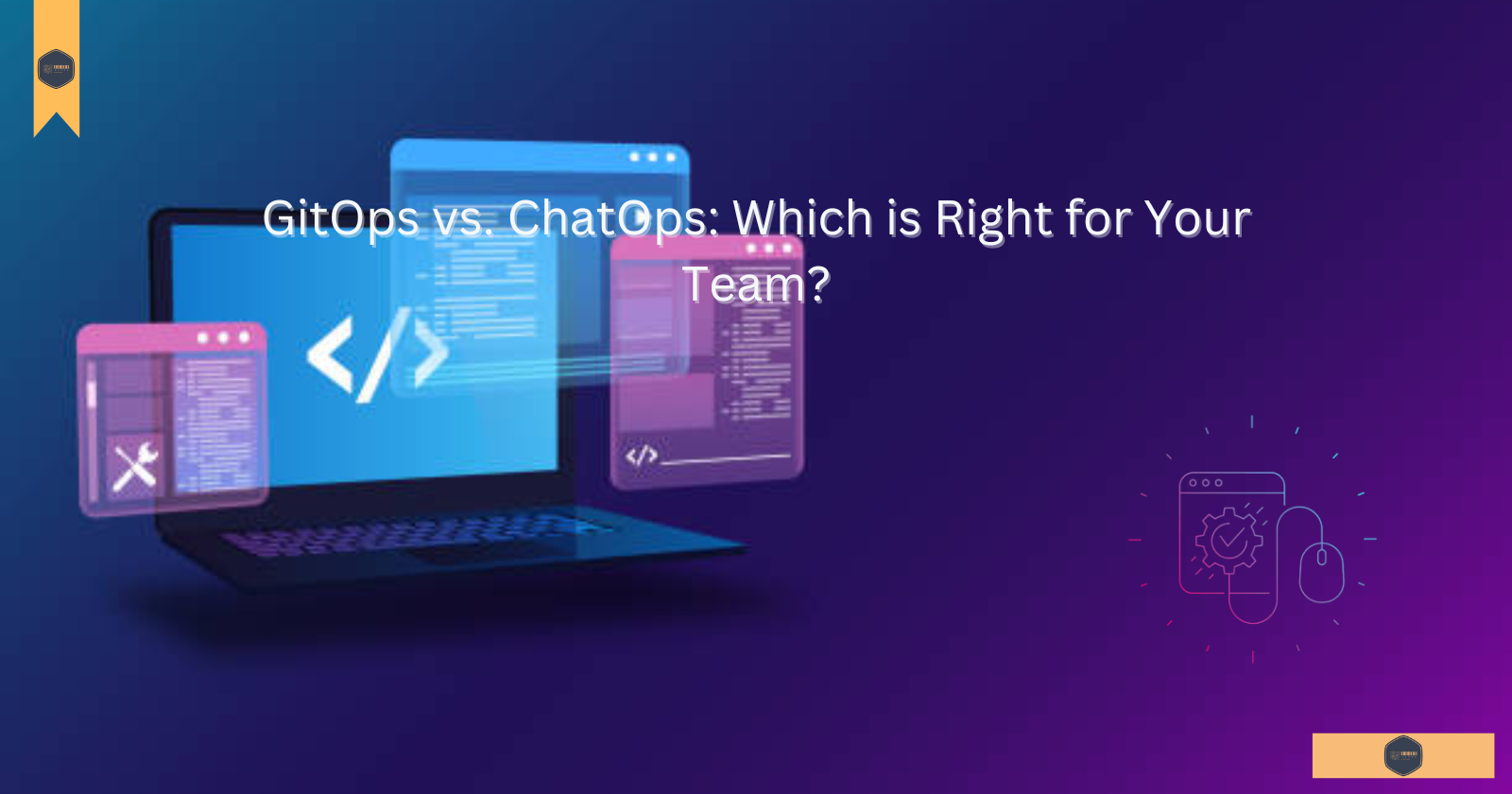GitOps vs. ChatOps
 Abdulrahman Ahmad
Abdulrahman Ahmad
Introduction
With the rise of DevOps, teams are looking for ways to collaborate more efficiently on infrastructure and application changes. Two popular methodologies for facilitating collaboration and streamlining development workflows are:
•GitOps - Using Git as the source of truth for defining and executing operations
•ChatOps - Using chat applications and bots to trigger operational workflows
Both GitOps and ChatOps aim to increase development velocity, simplify deployment processes, and tighten security. But each has some distinct differences in approach and use cases. Let's explore GitOps vs. ChatOps to determine the best fit for your team.
GitOps: Definition and Use Cases
GitOps:
•Uses Git repositories to define the desired infrastructure and application state. Changes go through code reviews and merges just like any other code change.
•Configuration files in the Git repository are continuously watched and any changes automatically trigger deployments to match the desired state.
•Best suited for teams with advanced Git workflows looking to extend them to operations. Works well for both infrastructure and application deployment.
•Examples: Use Terraform configurations in a Git repo to manage infrastructure. Or use Helm charts in Git to deploy Kubernetes applications.
ChatOps: Definition and Use Cases
ChatOps:
•Uses a chat service like Slack as the primary interface for developers and operations engineers. Commands issued in chat trigger CI/CD workflows and automation.
•Changes do not go through code reviews like with GitOps. Reviews and audits of configurations and changes must be handled separately.
•Typically used for quick, low-risk tasks like building and deploying applications, environment provisioning, and container deployment. Not typically used as the source of truth for infrastructure.
•Examples: Slash commands in Slack to kick off builds in Jenkins, deploy from CI systems like CircleCI, or run Terraform or Ansible.
A case study in choosing GitOps vs. ChatOps:
A large tech company was migrating legacy applications into Kubernetes but wanted to avoid "snowflake" environments that were configured differently over time. They chose to implement GitOps to manage all Kubernetes configurations in Git repositories with mandatory pull request reviews. This ensured consistency and auditability of changes.
However, developers also wanted a quick and easy way to deploy applications to test environments or for one-off tasks. The company implemented ChatOps by building Slash commands in Slack that could deploy Helm charts from their Git repositories into specific namespaces.
By combining GitOps for an authoritarian infrastructure state with ChatOps for convenience, this company achieved an optimal balance of control and velocity. For most teams, this type of hybrid model may offer the benefits of both methodologies.
Conclusion: Finding the Right Strategy for Your Team
In summary, while GitOps and ChatOps share some similar goals, they take quite different approaches. Understanding how each works and the use cases they are suited for will help determine the right strategy for your team. Often a combination of the two may be the ideal solution.
Subscribe to my newsletter
Read articles from Abdulrahman Ahmad directly inside your inbox. Subscribe to the newsletter, and don't miss out.
Written by

Abdulrahman Ahmad
Abdulrahman Ahmad
🚀 Code. Automate. Innovate. Hi, I’m Abdulrahman, a passionate DevOps Engineer and Software Developer on a mission to bridge the gap between code and production. With a love for automation, cloud-native solutions, and cutting-edge tech, I turn complex problems into seamless, scalable systems. 💡 What I Do: Build robust CI/CD pipelines that deliver software at the speed of thought. Architect cloud infrastructure that scales with a single command. Transform manual processes into automated workflows that just work. Break down silos and foster collaboration between teams. 🔧 Tech Stack I ❤️: Containers (Docker), Orchestration (Kubernetes), Infrastructure as Code (Terraform), CI/CD (Jenkins, GitLab), Cloud (AWS/GCP/Azure), and scripting like it’s my superpower. 📝 Why This Blog? This is where I share my journey, lessons learned, and the latest trends in DevOps and software engineering. Whether you're a seasoned pro or just starting out, join me as we explore the tools, tricks, and best practices that make the tech world tick. 🌟 Let’s Build the Future, One Pipeline at a Time. Connect with me, share your thoughts, and let’s automate the world together!